Sights
Discoveries in the park
The park is about 7 hectares (17 acres) in size. There is plenty to explore there at any time of the year. Young and old alike are fascinated by the donkey mill and the windmill, the impressive acoustics of the quarry, the maedow orchard wich is lush despide it´s age as well as the three small ponds and the several anthills.
Learn more about the history and nature of the park during one of our fascinating guided tours.
Donkey mill and wind turbine
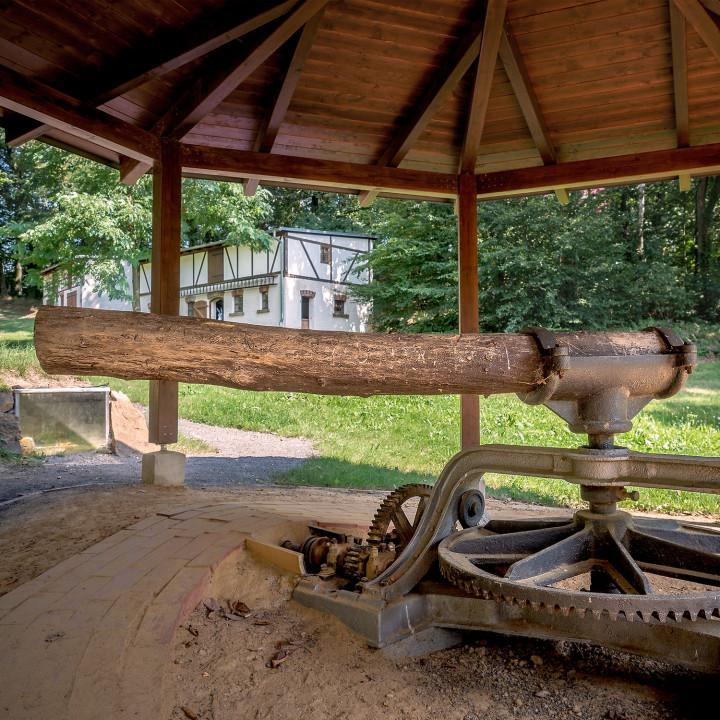
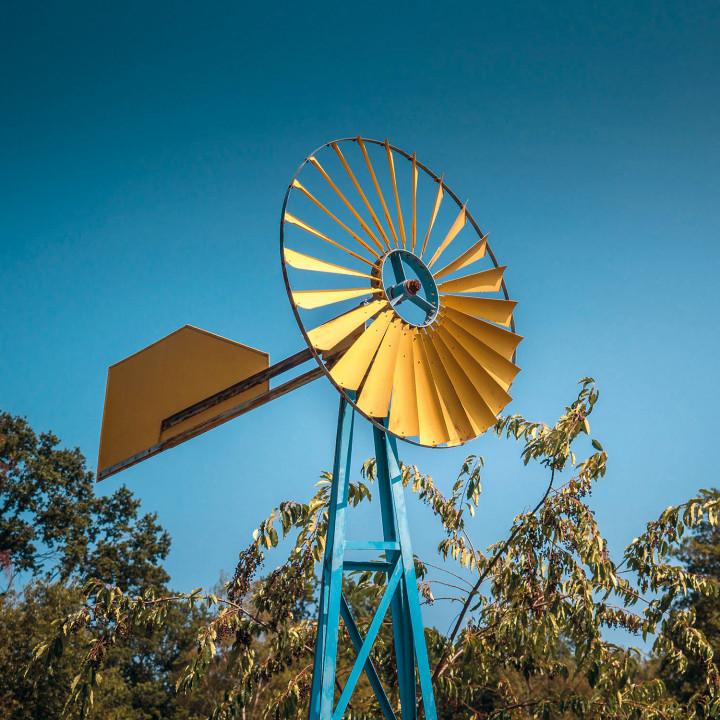
»This vital issue was first solved with a donkey mill, then with a wind turbine. After all, the trees at Energie had grown so tall that they deflected too much wind.«
GRETE OSTWALD, MY FATHER – WILHELM OSTWALD, 1953
The donkey mill and the model of a windmill symbolize Wilhelm Ostwald’s self-sufficient energy supply system, which he made use of very early on. He used donkey power to pump water from a well into the family home. Later on, Wilhelm Ostwald solved this task with a wind turbine instead. Today, children in particular enjoy setting the donkey mill in motion by themselves and gauging its strength in a playful way.
Our nature studies workshop ‘Experiencing energy flows’ takes a closer look at the forces of wind, water and the sun.
Treasures in the quarry
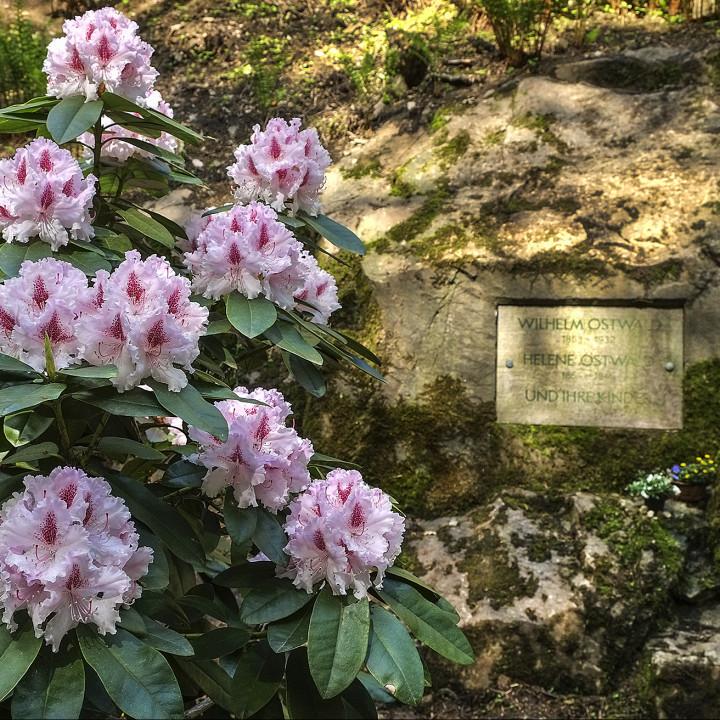
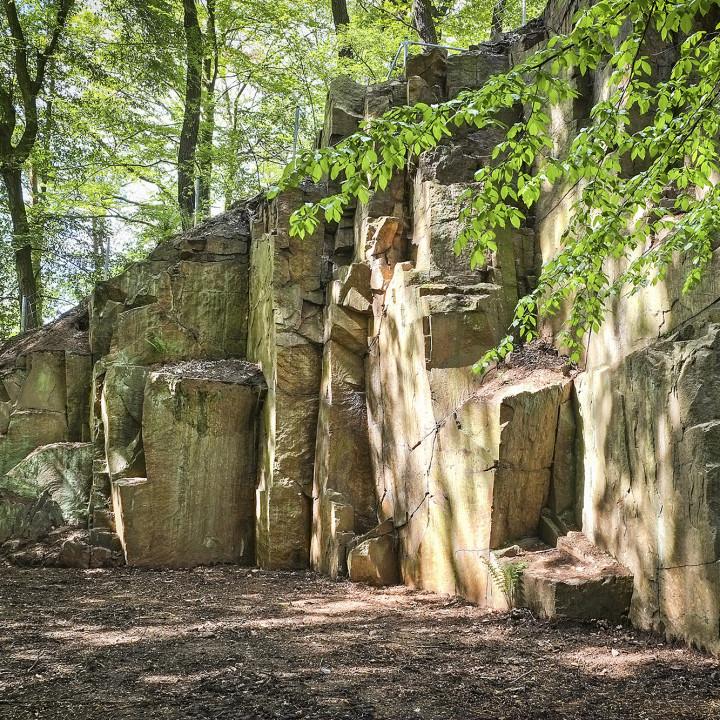
»In the immediate vicinity, a porphyry cone rose up, like the many others penetrating the moraine landscape.«
WILHELM OSTWALD, LIFELINES, 1926/27
The quarry of Wilhelm Ostwald Park, which is located in the middle of Porphyry Land Geopark, reveals the thickness of cold magma.
Three hundred million years ago, the eruptions of a supervolcano tore two huge calderas (basin-like craters) with diameters of up to 60 kilometres into the local landscape and buried them under a layer of lava and ash up to 500 metres thick. The history of the largest extinct volcanic area in Europe is told today by porphyries, i.e. volcanic rocks and their weathering products: kaolin clays.
Climate change, ice ages and weathering over millions of years all had a considerable influence on the landscape. Glaciers left their traces. They not only brought enormous quantities of rock debris, diverted rivers and eroding the porphyry mountain peaks, they also left glacial and wind abrasion in the bedrock.
The grave of Wilhelm Ostwald, his wife Helene and their children is located in the quarry of the park. It is an idyllic place of tranquility during a walk. The excellent acoustics of the quarry also make it possible to experience unique open air concerts in summer. Look forward to our quarry concert, which takes place every year in late summer, mostly in August around the birthday of Wilhelm Ostwald.
Our nature studies workshop ‘The super-volcano beneath our feet’ takes you on an exciting expedition into the history of the earth.
Meadow
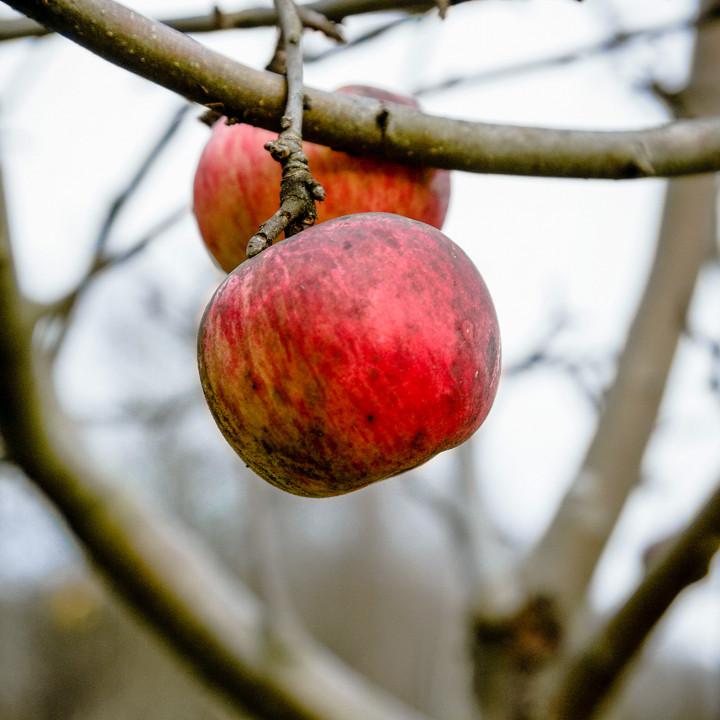
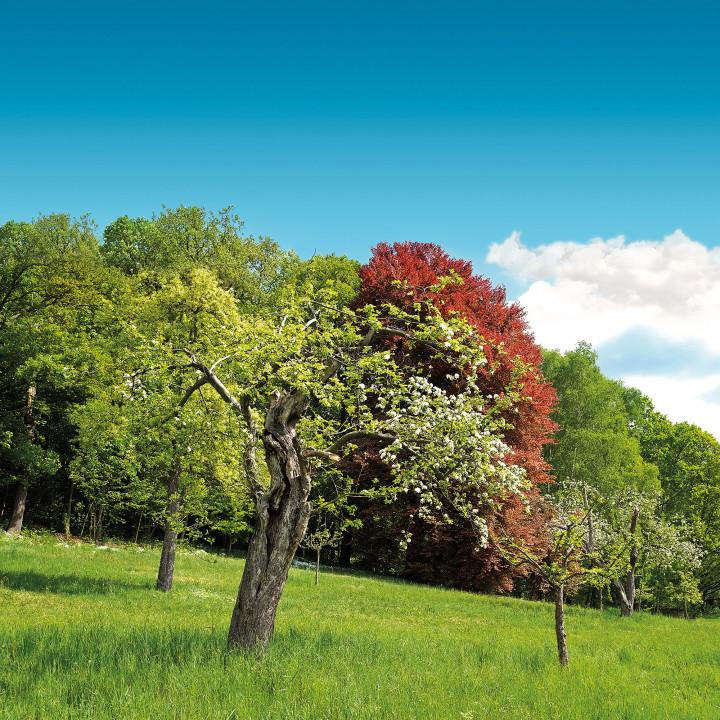
»“[There] lay the site which bore the house on the upper edge. From there, an orchard descended into the valley, which ended in a broad meadow below.«
WILHELM OSTWALD, LIFELINES, 1926/27
The orchard in Wilhelm Ostwald Park contains more than 40 varieties of apple and pear trees.
Orchards are a traditional form of fruit-growing. Even today, they are still a valuable, defining element of our cultural landscape. Created by human hand, they can only be maintained with regular care and use.
Orchards are among the most species-rich biotopes in Europe. Up to 5,000 species of animals and plants can be found on a single meadow. Unfortunately many of them are endangered. It is therefore all the more important to protect orchards and raise awareness of their importance.